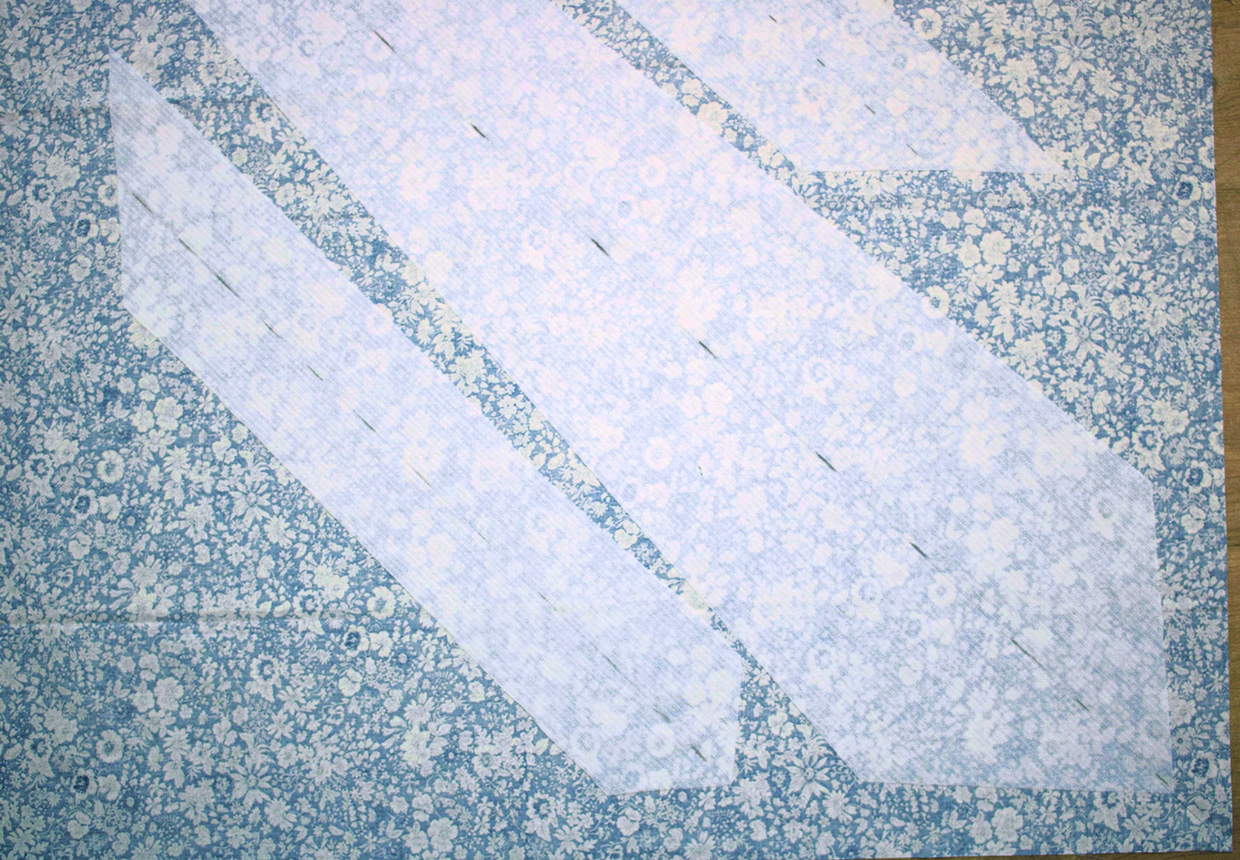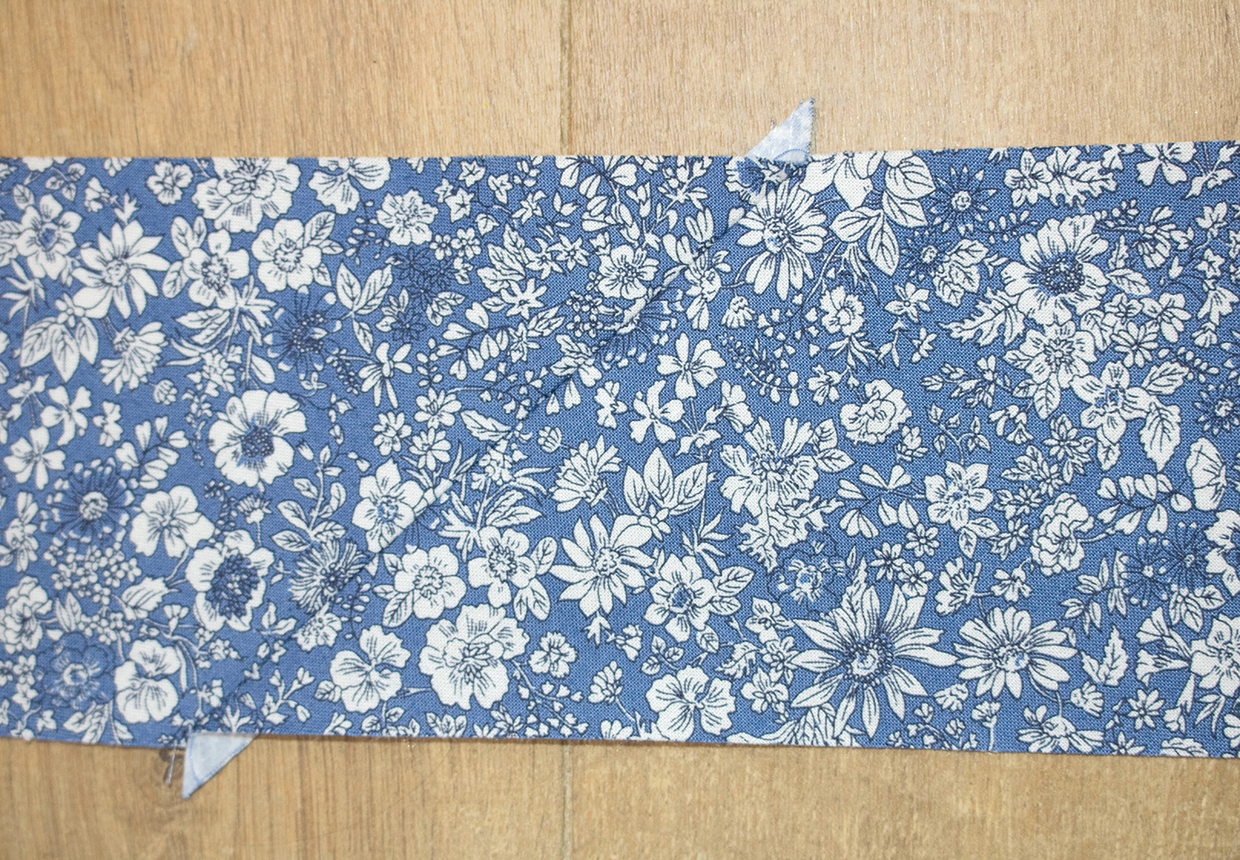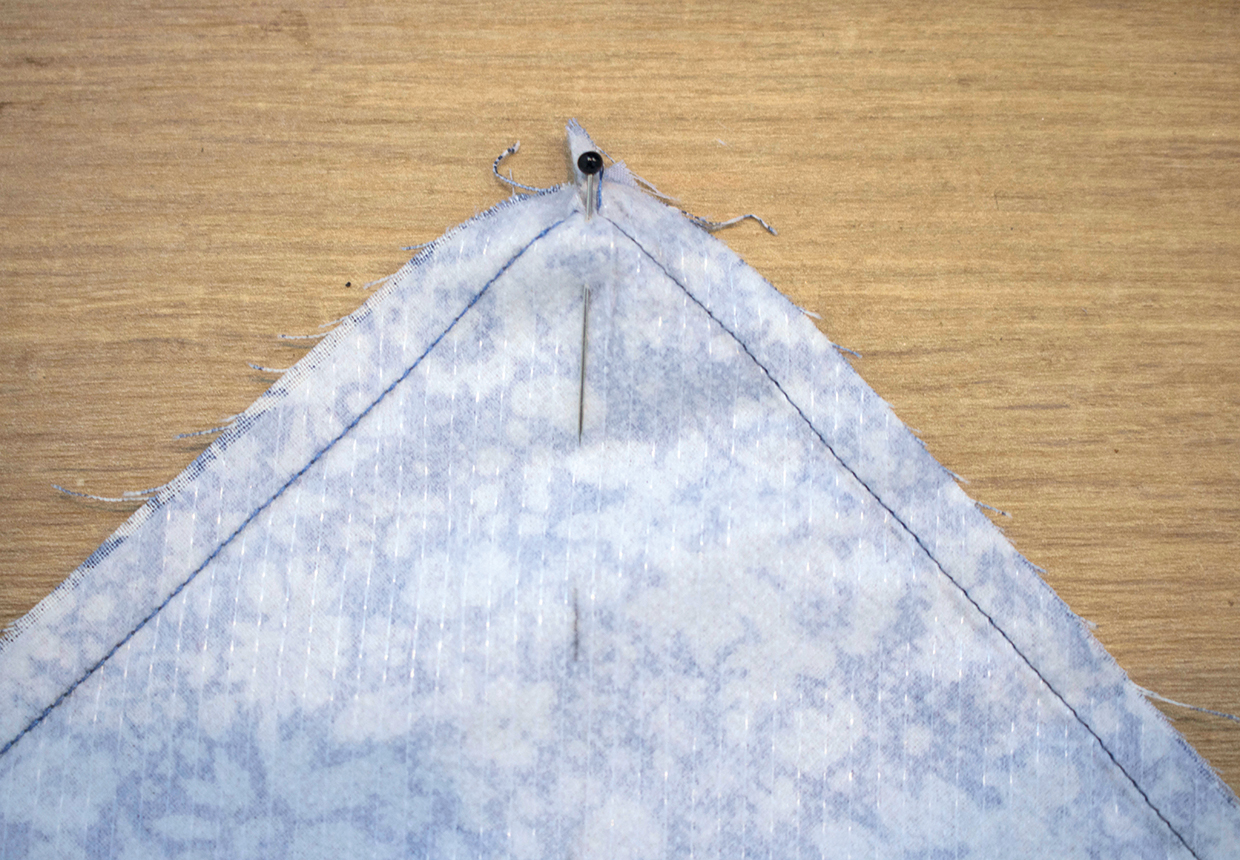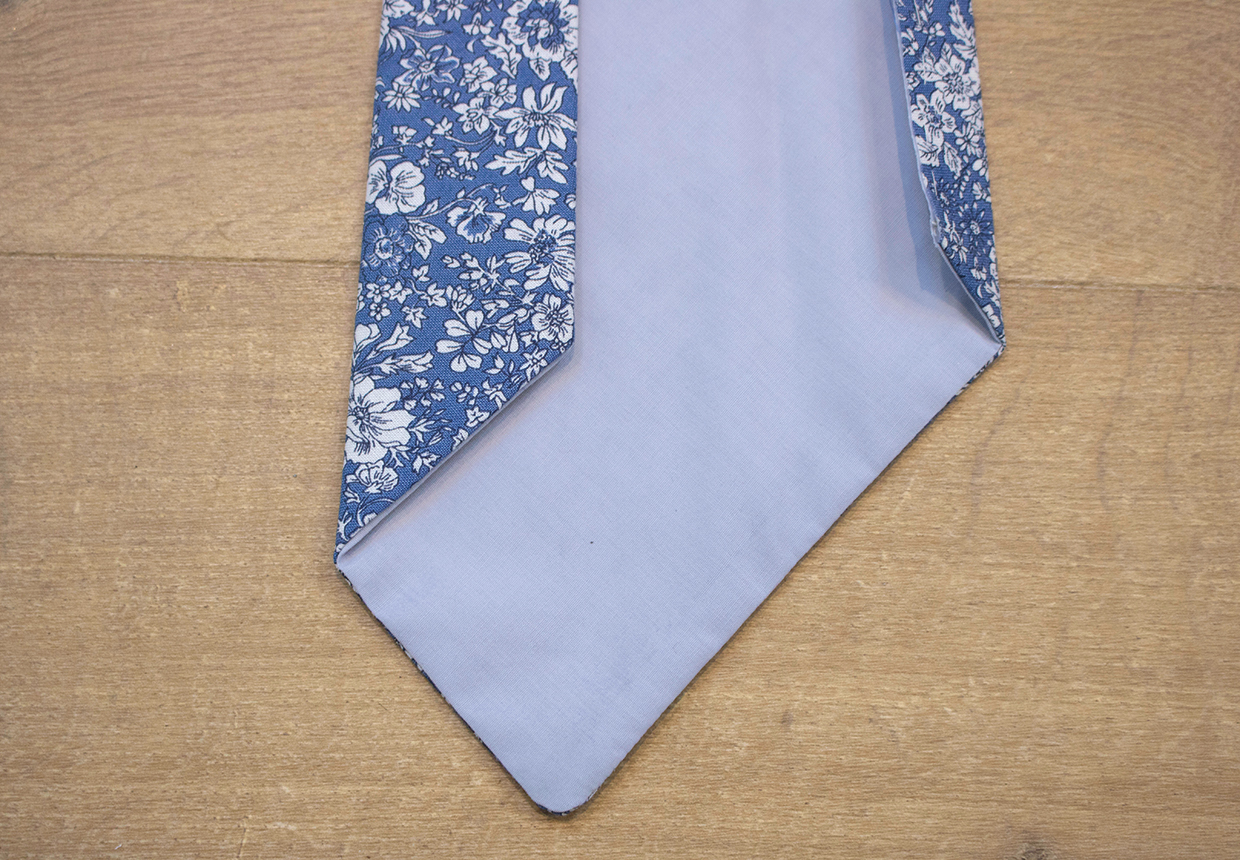Cutting out
Step 1
Download the templates and cut them out as instructed below.
From the lining fabric cut out:
- Lining front – using the A template
- Lining back – using the C template
From the interfacing cut out:
- Interfacing front – using the A template
- Interfacing middle – using the B template
- Interfacing back – using the C template

Making the tie outer pieces
Step 1
Fold the main fabric on the diagonal and mark this line on the wrong side (WS) with tailor’s chalk then put to one side.
Looking for a new sewing machine? Check out our round-up of the best sewing machines for beginners.
Step 2
Fold each of the interfacing pieces in half lengthways and mark this central fold line on the non-stick side of the interfacing.
Step 3
Lay the interfacing front glue side down flat onto the WS of the main fabric square and match the fold line to the chalked line on the fabric so it is laying on the true bias.
Step 4
Lay the interfacing middle and interfacing back pieces onto the main fabric, making sure the centre lines are parallel to the centre line on the tie front. This ensures that the tie lays straight once it has been made.
Step 5
Press the interfacing onto the fabric with a pressing cloth on top, taking care not to have your iron set too hot.
Step 6
Cut around each piece of interfacing to make the three tie outer pieces. Note that attaching the interfacing and then cutting around it ensures that you won’t end up with the interfacing stuck to your ironing board or your iron.
Joining the tie outer
Step 1
Draw a line 5mm (¼in) down from the angled edge of each piece on the interfacing. These are your stitching lines.
Step 2
Lay the three pieces out as shown in the photo so the middle is right sides (RS) up at the top with the front RS down on the right and the back RS down on top to the left.
You will have a small triangular overhang on both sides which should be equal in size.

Step 3
Tack the three pieces together, then open them out to make sure the straight edges of all the pieces are aligned.
Step 4
Sew the pieces together along your drawn lines using matching thread and a stitch length of 3. If you're unsure how, head over to our how to use a sewing machine guide.
Step 5
Press the seams open on both the WS side and then the RS.
Step 6
Trim off the small triangles at the edges.
Creating the points
Step 1
Mark a line 5mm (¼in) from the tip of the outer front.
Step 2
Fold the tie in half RS facing and stitch this tip together with a small stitch length.
Step 3
Mark a 5mm (¼in) seam allowance on both sides of the outer front pointed end.
Step 4
Place the outer front and lining front RS together and sew along the line, starting at the side edge then towards the tip of the tie on both sides. Sew up to the tip but not over it.

Step 5
Turn the point RS out and press, so the lining is slightly set back from the tie front.
Step 6
Repeat this process with the pointed end of the tie back, stitching the tip then sewing the outer and lining back RS together.
Folding the edges in
Step 1
Tack the long raw edges of the outer and lining together down both side of the front section and the back section to hold them together. These raw edges and tacking stitches will be hidden inside the tie when it’s finished.
Step 2
Fold the long edges over by 2cm (¾in) to the lining side and press the edges.
Step 3
Next, fold both sides into the centre line which is marked on your interfacing and lightly press and pin in place.

Joining the edges
Step 1
Join the sides of the front end of the tie by sewing a bar tack 5cm (2in) up from where the tie front meets. The bar tack goes through to the lining but not the front of the tie.
Step 2
Work another bar tack at the back end of the tie 2.5cm (2in) from the end.
Step 3
Sew the folded under edges of the tie together where they meet in the centre, starting and ending at the bar tacks, using ladder stitch.
Step 4
Press the tie gently with a dry iron and pressing cloth to finish.









